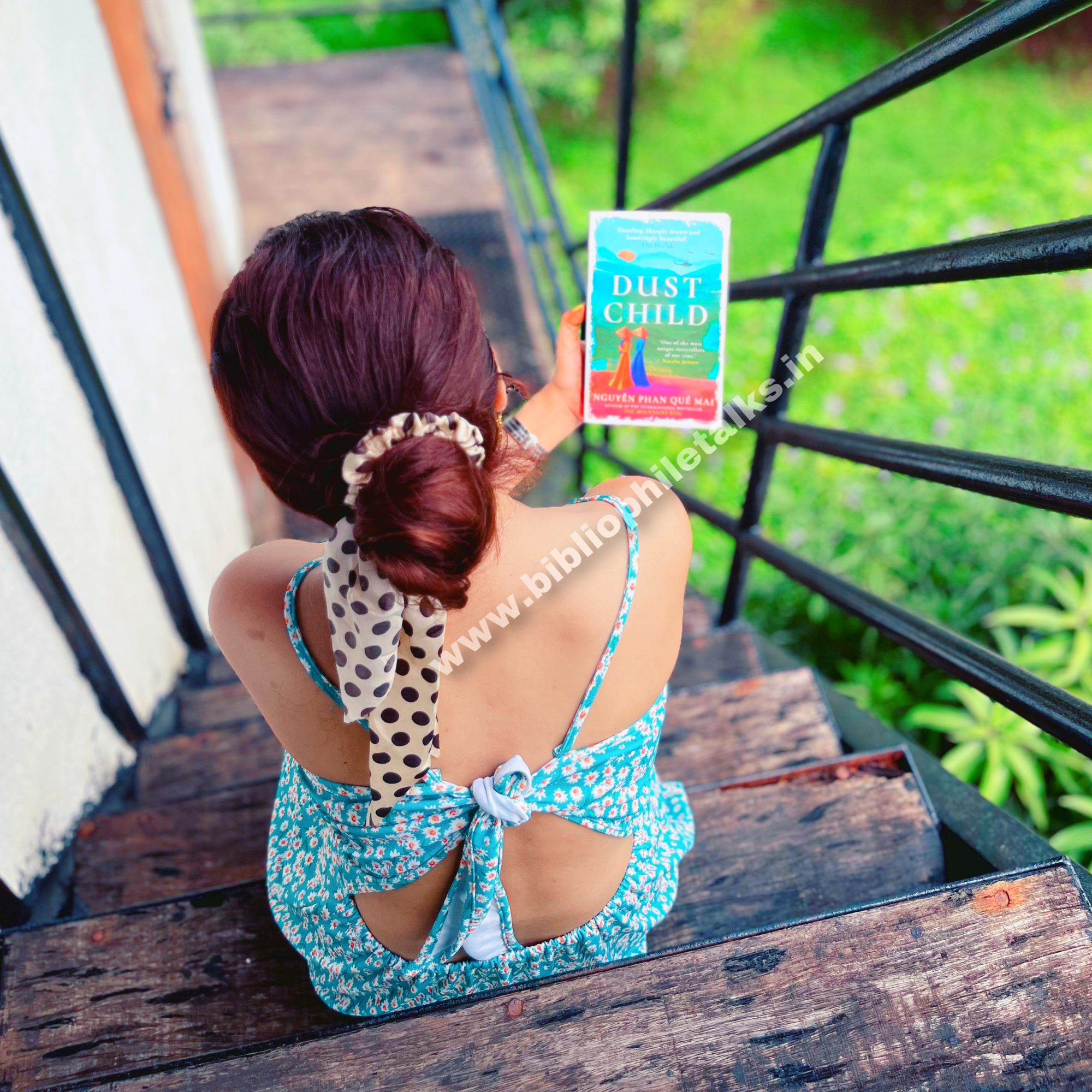DUST CHILD

𝐃𝐮𝐬𝐭 𝐂𝐡𝐢𝐥𝐝
𝐁𝐲 𝐍𝐠𝐮𝐲𝐞𝐧 𝐏𝐡𝐚𝐧 𝐐𝐮𝐞 𝐌𝐚𝐢
𝐏𝐮𝐛𝐥𝐢𝐬𝐡𝐞𝐫: 𝐎𝐧𝐞 𝐖𝐨𝐫𝐥𝐝 𝐏𝐮𝐛𝐥𝐢𝐜𝐚𝐭𝐢𝐨𝐧
𝐏𝐚𝐩𝐞𝐫𝐛𝐚𝐜𝐤: 𝟑𝟓𝟑
𝐏𝐮𝐛𝐥𝐢𝐬𝐡𝐞𝐝: 𝟏𝟒𝐭𝐡 𝐌𝐚𝐫𝐜𝐡 𝟐𝟎𝟐𝟑
𝐆𝐞𝐧𝐫𝐞: 𝐇𝐢𝐬𝐭𝐨𝐫𝐢𝐜𝐚𝐥 𝐅𝐢𝐜𝐭𝐢𝐨𝐧/ 𝐕𝐢𝐞𝐭𝐧𝐚𝐦𝐞𝐬𝐞 𝐋𝐢𝐭𝐞𝐫𝐚𝐭𝐮𝐫𝐞
𝐕𝐢𝐞𝐭𝐧𝐚𝐦𝐞𝐬𝐞 𝐋𝐢𝐭𝐞𝐫𝐚𝐭𝐮𝐫𝐞
𝐑𝐞𝐚𝐝𝐢𝐧𝐠 𝐘𝐞𝐚𝐫: 𝟐𝟎𝟐𝟒
Were you aware that children born to Asian women and American GIs during the Vietnam War were labelled as "dust children"? Regrettably, a significant number of these offspring faced orphanhood, severe mistreatment, and social ostracism in Vietnam, particularly those with African American fathers with darker skin tones.
During the Vietnam War (1962-1975), US soldiers fought against communism and the Viêt Cong in Vietnam. While in cities like Saigon during downtime, soldiers visited bars where Vietnamese women worked. These women, facing hardships due to the war, sought financial support for their families by working as Bar Girls or in brothels. Many kept their work a secret due to societal shame and the danger of exposure to both family and the Viêt Cong. The aftermath saw American soldiers leaving behind children, often in poverty and facing societal challenges.
The central characters in this book are Trang and Quỳnh, two sisters who relocate to Saigon to work as bar girls. Initially told it involves merely drinking tea with American soldiers, they discover the reality is far more complex. Their motive is to generate funds to alleviate their parents' debt and assist their father's medical expenses. The narrative primarily unfolds from the perspective of the older sister, Trang.
The narrative also unfolds through the perspective of a white American soldier, seeking solace in Vietnam to address his PTSD from wartime service. Supported by his wife Linda and therapist, he embraces tools like 'geographical therapy.' However, upon returning to Vietnam, he confronts guilt over his own transgressions. Despite being engaged to Linda during his time in Vietnam, he grapples with the responsibility of fathering and abandoning a child in Vietnam. Determined to uncover the truth about his old girlfriend, he faces the challenging task of explaining this to his wife and reconciling with the abandonment of his purported child.
This narrative also provides insight into the life of an abandoned Amerasian, born to a Black American soldier and a Vietnamese woman. Living in dire poverty and facing discrimination in Vietnam, he bears the derogatory label "Dust Child" due to his mixed race. Among Amerasians, Black individuals are particularly marginalized, enduring extreme poverty and racism. We follow Phong's journey, witnessing his struggles and efforts to reach America and find his unknown father to escape a life of poverty and shame. Despite facing numerous obstacles, we discover Phong's resilience, strength, and unwavering hope, cheering him on in the belief that one day he may reunite with his lost family.
Now, let's delve into the writing aspect of the book. The narrative skillfully paints a vivid picture of Vietnam and the events, almost like watching a movie unfold before your eyes. The storytelling is truly exceptional, and I commend the author for conveying it in a language that is both accessible and powerful. Everything, from character development to writing style, is executed perfectly, contributing to a fast-paced and engaging experience.
Regardless of your preferred genre, Dust Child is a must-read for every reader. I assure you it's a story that will linger in your memory, potentially becoming a transformative part of you. To fully experience its impact, take away something meaningful from the narrative. Let it contribute to your growth and make you a better person. I'll conclude here, trusting that this brief note has inspired you to pick up a copy. As promised, it's a worthwhile journey!
My Rating:
5/5
NOTE: In this blog, the CONTENT and PICTURES are owned by Samayra Singh, and cannot be used or distributed without permission. Strict legal action will be taken against any infringement.